Showing Spotlights 137 - 144 of 203 in category All (newest first):
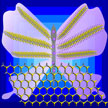 As researchers continue to develop the use of graphene in energy storage devices, other two-dimensional (2D) inorganic materials like 2D transition metal disulfides have attracted extensive scientific attention. Vanadium disulfide few-layered nanosheets have been recently achieved experimentally, and in new work, scientists systematically investigated the adsorption and diffusion of lithium on the recently synthesized vanadium disulfide monolayer in comparison with MoS2 monolayer and graphite.
As researchers continue to develop the use of graphene in energy storage devices, other two-dimensional (2D) inorganic materials like 2D transition metal disulfides have attracted extensive scientific attention. Vanadium disulfide few-layered nanosheets have been recently achieved experimentally, and in new work, scientists systematically investigated the adsorption and diffusion of lithium on the recently synthesized vanadium disulfide monolayer in comparison with MoS2 monolayer and graphite.
Dec 3rd, 2013
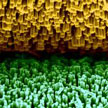 There is an almost infinite number of mechanical energy sources all around us - basically, anything that moves can be harvested for energy. These environmental energy sources can the very large, like wave power in the oceans, or very small, like rain drops or biomechanical energy from heart beat, breathing, and blood flow. With the increasing use of nanotechnology materials and applications in energy research, scientists are finding more and more ways to tap into these pretty much limitless sources of energy. Self-powered nanotechnology based on piezoelectric nanogenerators aims at powering nanodevices and nanosystems using the energy harvested from the environment in which these systems are suppose to operate.
There is an almost infinite number of mechanical energy sources all around us - basically, anything that moves can be harvested for energy. These environmental energy sources can the very large, like wave power in the oceans, or very small, like rain drops or biomechanical energy from heart beat, breathing, and blood flow. With the increasing use of nanotechnology materials and applications in energy research, scientists are finding more and more ways to tap into these pretty much limitless sources of energy. Self-powered nanotechnology based on piezoelectric nanogenerators aims at powering nanodevices and nanosystems using the energy harvested from the environment in which these systems are suppose to operate.
Nov 19th, 2013
 Going hand in hand with the development of wearable electronic textiles, researchers are also pushing the development of wearable and flexible energy storage to power those e-textiles. Researchers have now developed wearable textile batteries that can be integrated with flexible solar cells and thus be recharged by solar energy. The team found unconventional materials for all of the key battery components and integrated them into a fully wearable battery.
Going hand in hand with the development of wearable electronic textiles, researchers are also pushing the development of wearable and flexible energy storage to power those e-textiles. Researchers have now developed wearable textile batteries that can be integrated with flexible solar cells and thus be recharged by solar energy. The team found unconventional materials for all of the key battery components and integrated them into a fully wearable battery.
Nov 8th, 2013
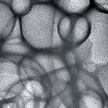 Researchers are working hard to find inexpensive alternatives to platinum catalysts for use in hydrogen fuel cells. Doped carbons were discovered to be a possible alternative to platinum-based materials about five years ago. Researchers have now developed a really simple route to carbon materials that perform almost as well as a commercial platinum/carbon in a key fuel cell reaction. To make these materials, they use gelatin - the same gelatin you'd use to make jelly/jello.
Researchers are working hard to find inexpensive alternatives to platinum catalysts for use in hydrogen fuel cells. Doped carbons were discovered to be a possible alternative to platinum-based materials about five years ago. Researchers have now developed a really simple route to carbon materials that perform almost as well as a commercial platinum/carbon in a key fuel cell reaction. To make these materials, they use gelatin - the same gelatin you'd use to make jelly/jello.
Oct 7th, 2013
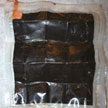 Over the past few years, we have seen an explosion of interest in electronic devices based on paper or textile components. These substrates are attractive because they can impart flexibility and low- cost manufacturing to devices such as transistors, circuits, light-emitting diodes, and batteries. They also can be folded. Researchers now have have shown that paper-folding concepts can be applied to Li-ion batteries in order to realize a device with higher areal energy densities.
Over the past few years, we have seen an explosion of interest in electronic devices based on paper or textile components. These substrates are attractive because they can impart flexibility and low- cost manufacturing to devices such as transistors, circuits, light-emitting diodes, and batteries. They also can be folded. Researchers now have have shown that paper-folding concepts can be applied to Li-ion batteries in order to realize a device with higher areal energy densities.
Oct 1st, 2013
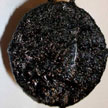 Oxygen is an advantageous battery storage material as it is freely available from the air and does not need to be carried with the other battery components. Unlike the lithium-ion batteries used today, lithium-oxygen batteries do not require metal oxide cathodes to produce electrochemical power, instead generating power from reactions with oxygen in the atmosphere. A new class of rechargeable batteries - 'molten air' batteries - suses highly conductive molten electrolytes and very high capacity multiple electron compounds such as carbon and vanadium diboride. Unlike prior rechargeable molten batteries, the molten air battery is not burdened by the weight of the active chargeable cathode material.
Oxygen is an advantageous battery storage material as it is freely available from the air and does not need to be carried with the other battery components. Unlike the lithium-ion batteries used today, lithium-oxygen batteries do not require metal oxide cathodes to produce electrochemical power, instead generating power from reactions with oxygen in the atmosphere. A new class of rechargeable batteries - 'molten air' batteries - suses highly conductive molten electrolytes and very high capacity multiple electron compounds such as carbon and vanadium diboride. Unlike prior rechargeable molten batteries, the molten air battery is not burdened by the weight of the active chargeable cathode material.
Sep 16th, 2013
 With the semiconductor industry still on the path of Moore's law, researchers have already been toying with single-molecule electronics and molecular memory to push miniaturization of electronics to its limit. However, with electrical gadgets and devices getting increasingly smaller and functionally more powerful, the current density flowing through the copper and gold conductors in these devices has been exponentially increasing. Therefore, electrical conductors with higher current density tolerance are in huge demand and recent research has addressed this issue.
With the semiconductor industry still on the path of Moore's law, researchers have already been toying with single-molecule electronics and molecular memory to push miniaturization of electronics to its limit. However, with electrical gadgets and devices getting increasingly smaller and functionally more powerful, the current density flowing through the copper and gold conductors in these devices has been exponentially increasing. Therefore, electrical conductors with higher current density tolerance are in huge demand and recent research has addressed this issue.
Aug 6th, 2013
 Microbial fuel cells are a prime example of environmental biotechnology that turns the treatment of organic wastes into a source of electricity. In microbial fuel cells, the naturally occurring decomposing pathways of electrogenic bacteria are used to both clean water and produce electricity by oxidizing biological compounds from wastewater and other liquid wastes, even urine. Researchers have now demonstrated a sustainable and practical design for a micro-sized microbial fuel cell.
Microbial fuel cells are a prime example of environmental biotechnology that turns the treatment of organic wastes into a source of electricity. In microbial fuel cells, the naturally occurring decomposing pathways of electrogenic bacteria are used to both clean water and produce electricity by oxidizing biological compounds from wastewater and other liquid wastes, even urine. Researchers have now demonstrated a sustainable and practical design for a micro-sized microbial fuel cell.
Aug 1st, 2013
 As researchers continue to develop the use of graphene in energy storage devices, other two-dimensional (2D) inorganic materials like 2D transition metal disulfides have attracted extensive scientific attention. Vanadium disulfide few-layered nanosheets have been recently achieved experimentally, and in new work, scientists systematically investigated the adsorption and diffusion of lithium on the recently synthesized vanadium disulfide monolayer in comparison with MoS2 monolayer and graphite.
As researchers continue to develop the use of graphene in energy storage devices, other two-dimensional (2D) inorganic materials like 2D transition metal disulfides have attracted extensive scientific attention. Vanadium disulfide few-layered nanosheets have been recently achieved experimentally, and in new work, scientists systematically investigated the adsorption and diffusion of lithium on the recently synthesized vanadium disulfide monolayer in comparison with MoS2 monolayer and graphite.
 Subscribe to our Nanotechnology Spotlight feed
Subscribe to our Nanotechnology Spotlight feed





